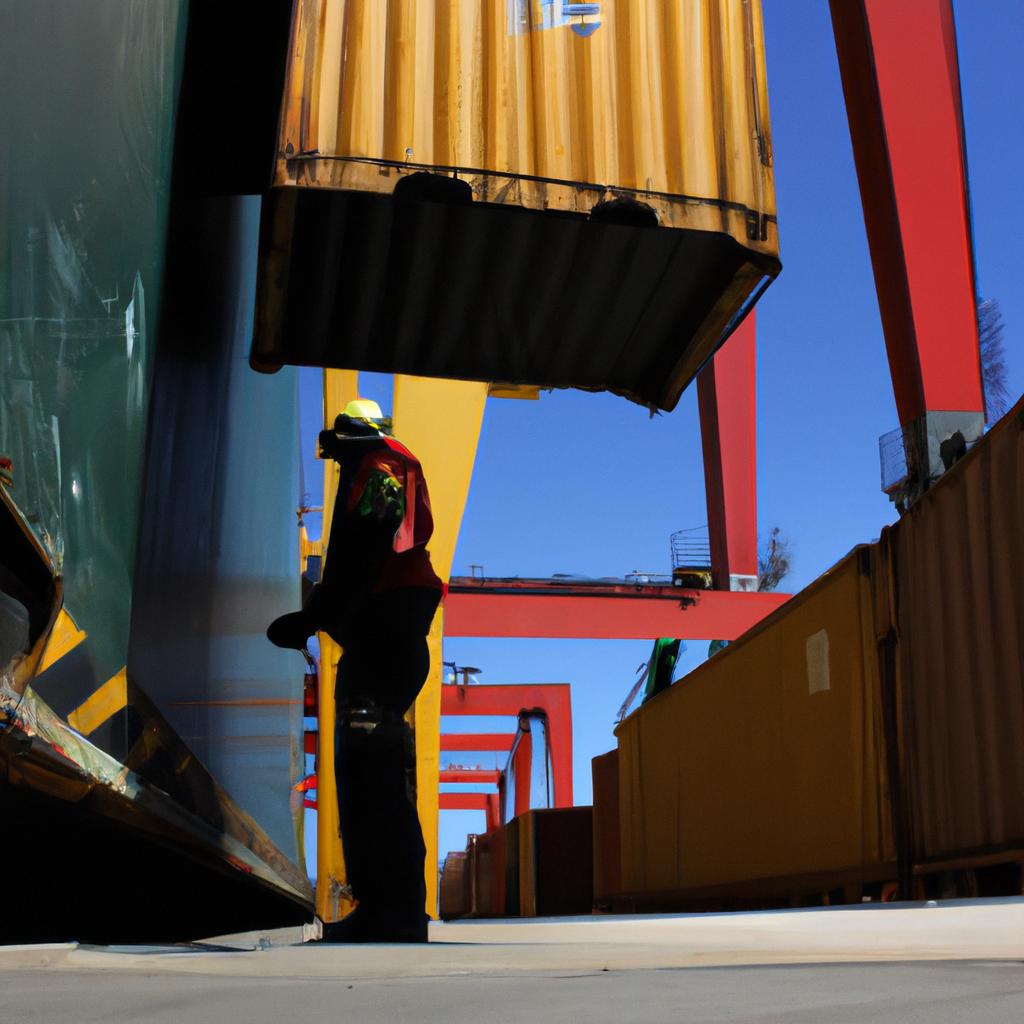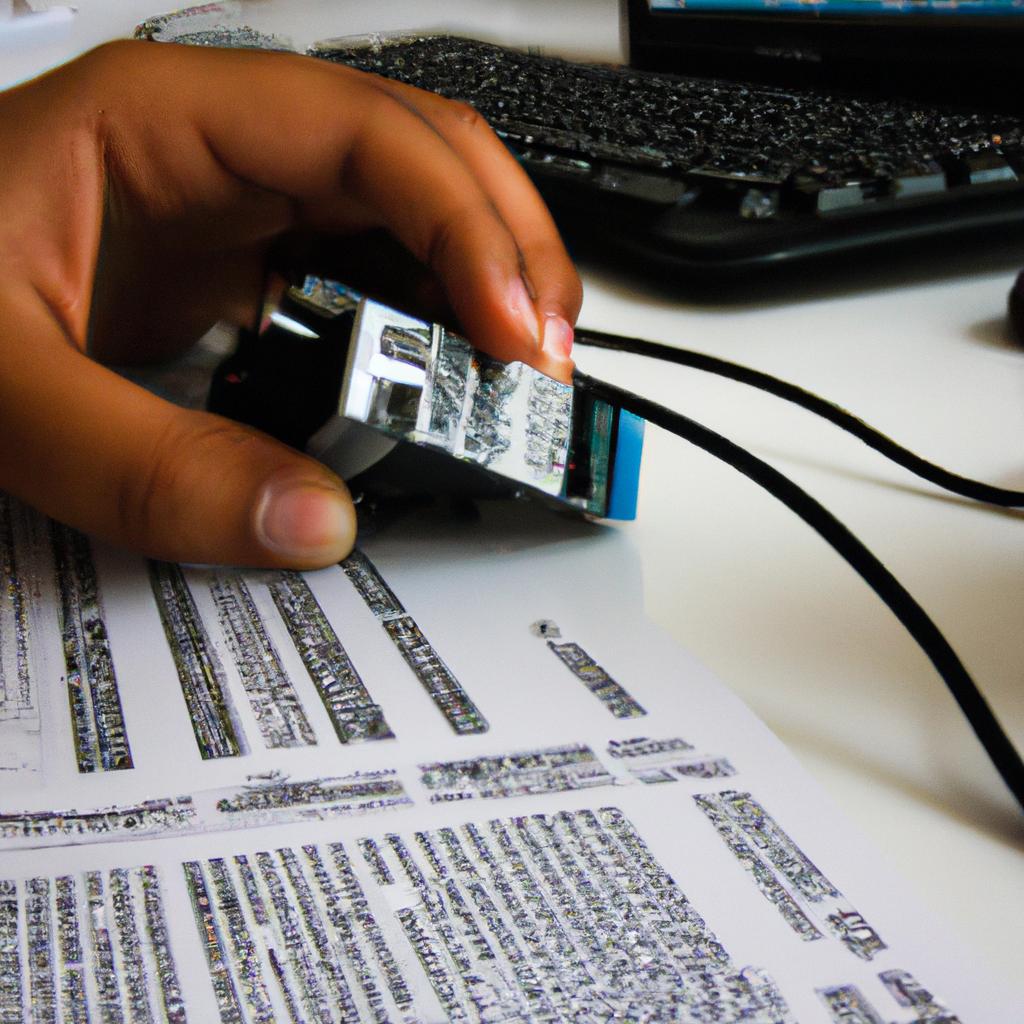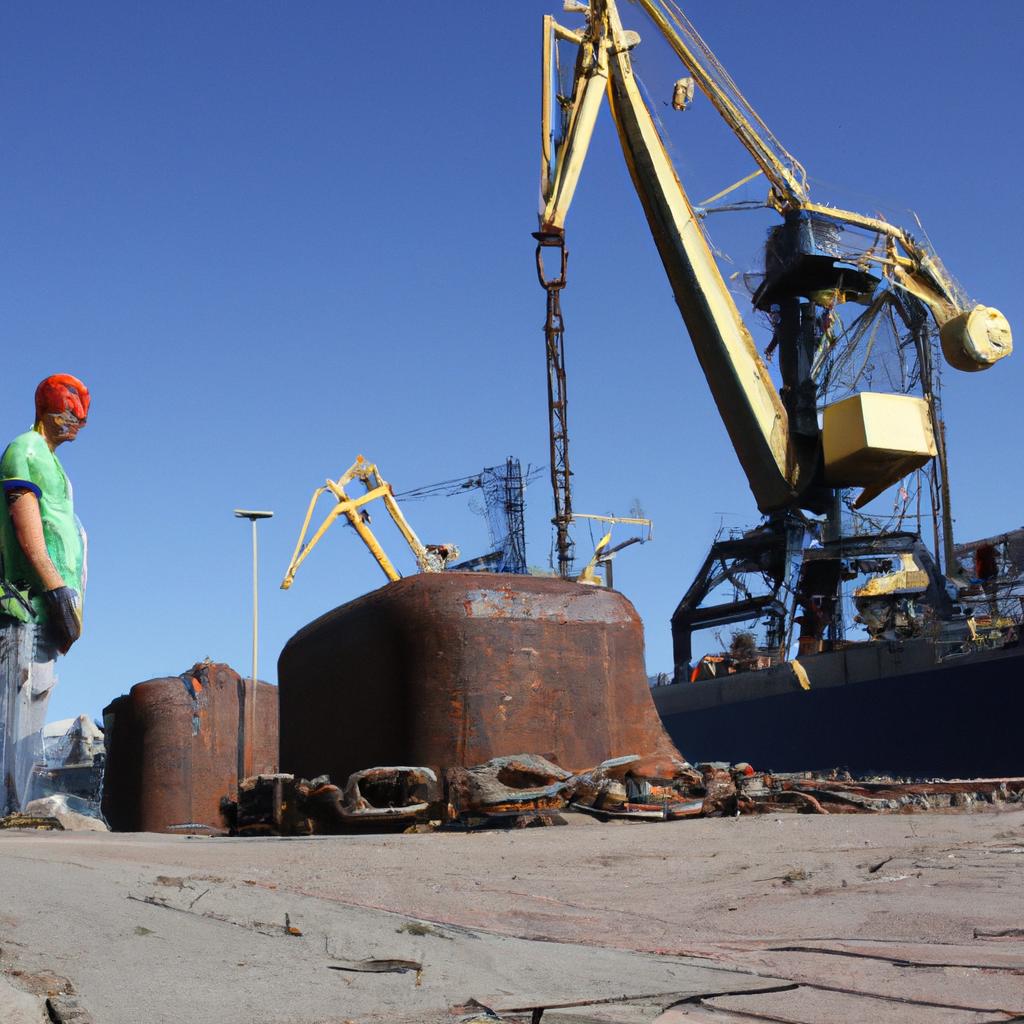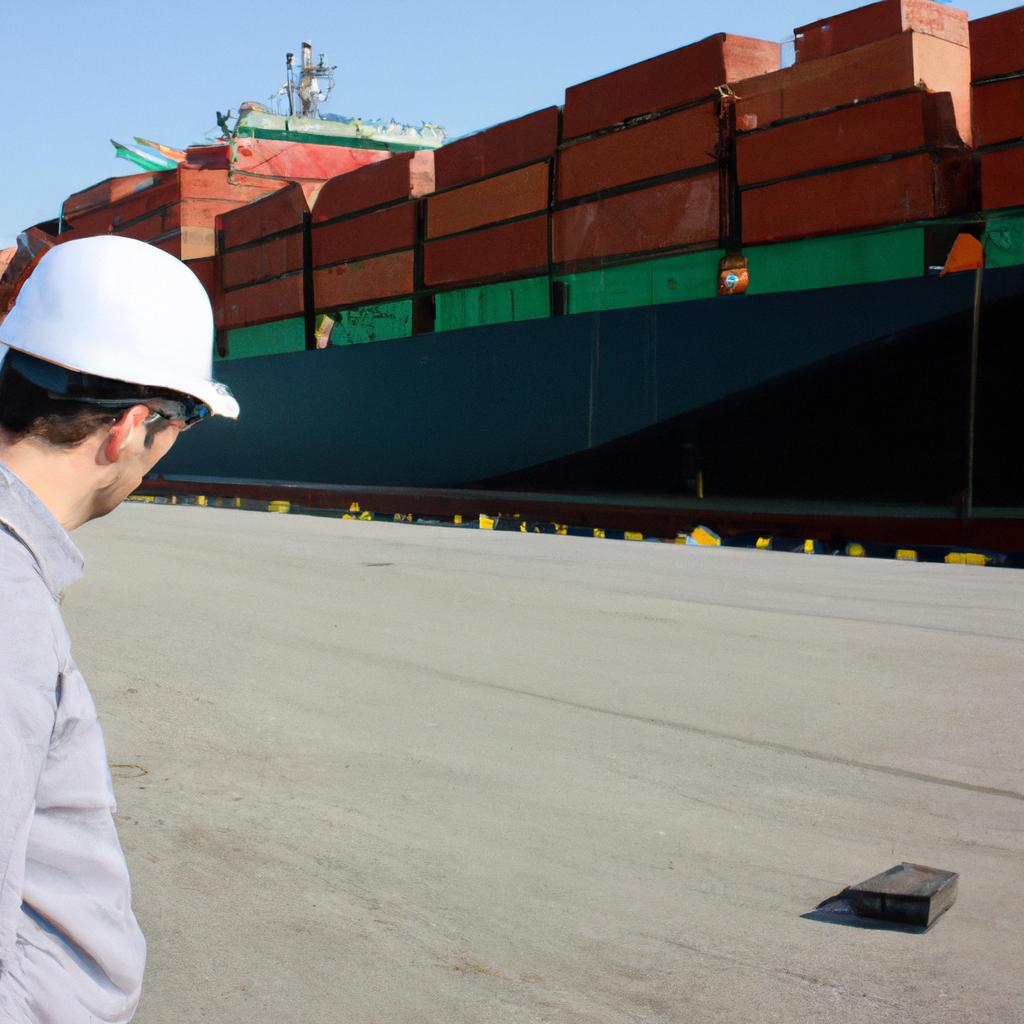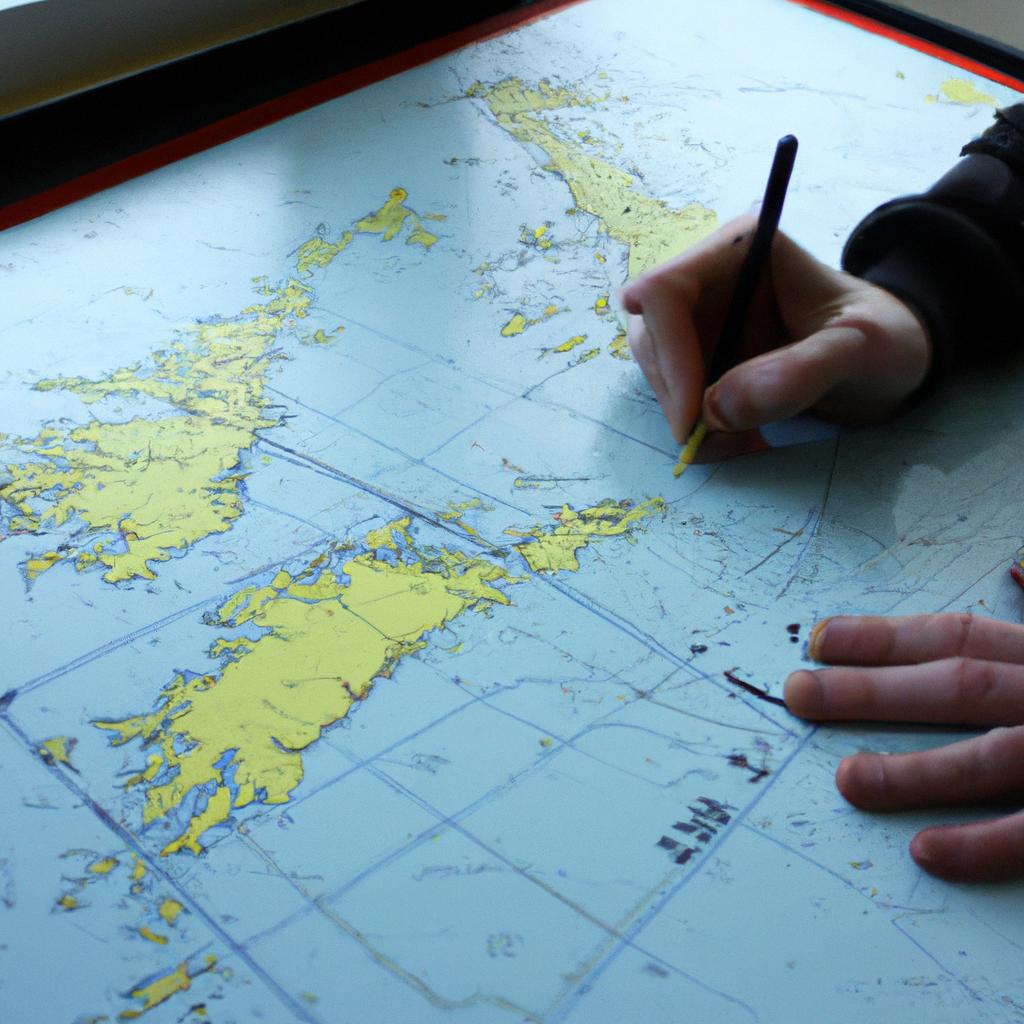Ports play a crucial role in facilitating international trade and fostering economic growth. The Black Sea region, situated at the crossroads of Europe, Asia, and the Middle East, has long been an important hub for maritime transportation. With its strategic location and abundant natural resources, the region offers immense opportunities for trade expansion. However, to fully exploit these advantages, it is essential to develop efficient port infrastructure that can enhance connectivity and ensure smooth flow of goods.
For instance, let us consider the case of Port Constanta in Romania, one of the largest ports on the Black Sea coast. Despite its significant potential as a gateway for regional trade, this port faces numerous challenges related to outdated infrastructure and limited capacity. These issues result in congestion and delays in cargo handling operations, ultimately hindering overall efficiency. Therefore, there is a pressing need to invest in modernizing port facilities and improving logistics networks to unlock the full potential of Black Sea transport.
This article aims to explore the importance of port infrastructure development in enhancing connectivity and efficiency within the Black Sea region. By examining current challenges faced by major ports like Port Constanta and analyzing successful examples from other regions, we will identify key strategies that can be employed to overcome these hurdles. Additionally, we will discuss how improved connectivity can lead to increased trade volumes, attract foreign investment, and stimulate economic growth in the Black Sea region.
One of the primary benefits of enhanced port infrastructure is improved connectivity. When ports are equipped with modern facilities and efficient logistics networks, it becomes easier for goods to be transported seamlessly between different modes of transportation such as ships, trucks, and trains. This connectivity not only reduces transit times but also lowers costs associated with transportation, making goods more affordable and accessible to both domestic and international markets.
Furthermore, improved port infrastructure can lead to increased trade volumes. Ports that can accommodate larger vessels and handle higher cargo volumes are more attractive to shipping lines and traders. As a result, these ports become major transshipment hubs where goods are consolidated from various sources before being distributed further. This consolidation effect leads to economies of scale and encourages more businesses to utilize the port’s services, ultimately boosting trade activity and generating revenue for the region.
In addition to attracting trade, efficient port infrastructure also plays a crucial role in attracting foreign investment. Companies looking to establish regional distribution centers or manufacturing facilities often consider factors such as reliable transportation networks when deciding on their location. By investing in modernizing their port infrastructure, countries in the Black Sea region can showcase their commitment to facilitating international trade and make themselves more appealing destinations for foreign direct investment (FDI). Increased FDI not only brings capital inflows but also creates job opportunities and stimulates economic development within the local communities.
Overall, improving connectivity through enhanced port infrastructure has far-reaching benefits for the Black Sea region. It enables smoother flow of goods, increases trade volumes, attracts foreign investment, creates employment opportunities, and drives economic growth. Therefore, it is imperative for governments and relevant stakeholders in this region to prioritize investments in developing efficient port facilities that can unlock its full potential as a vibrant hub for international trade.
Challenges in Black Sea transport infrastructure
In recent years, the Black Sea region has faced numerous challenges in its transport infrastructure, hindering connectivity and efficiency. One example of such a challenge is the inadequate port facilities that struggle to handle the increasing volume of goods being transported through the region. For instance, the Port of Constanta in Romania, an important gateway for trade in the Black Sea, has been facing capacity constraints due to outdated equipment and insufficient investment.
To further highlight the pressing issues at hand, we can examine some key challenges faced by the Black Sea transport infrastructure:
-
Insufficient intermodal connections: The lack of efficient linkages between different modes of transportation (such as ports, railways, and roads) poses a significant barrier to seamless connectivity within the region. This often results in delays and increased costs for businesses involved in international trade.
-
Inadequate maintenance and modernization: Many existing ports suffer from poor maintenance practices and outdated technologies, which limit their ability to accommodate larger vessels efficiently. Without necessary upgrades and investments, these ports risk falling behind competitors in other regions.
-
Environmental concerns: The environmentally sensitive nature of the Black Sea ecosystem requires sustainable development practices when it comes to port infrastructure projects. However, there have been instances where improper waste disposal or pollution from vessel emissions have negatively impacted marine life and coastal communities.
-
Geopolitical complexities: The geopolitical landscape surrounding the Black Sea region introduces additional challenges to its transport infrastructure development. Political tensions and conflicting interests among countries make it difficult to achieve consensus on regional cooperation initiatives aimed at enhancing connectivity.
To better understand these challenges visually, consider Table 1 below:
| Challenge | Impact | Example |
|---|---|---|
| Insufficient intermodal connections | Delays & increased costs | Lengthy transit times between modes |
| Inadequate maintenance & modernization | Decreased competitiveness | Limited capacity for larger vessels |
| Environmental concerns | Ecological damage | Pollution affecting marine ecosystems |
| Geopolitical complexities | Hindered regional cooperation efforts | Disagreements on infrastructure projects |
In light of these challenges, it is clear that effective strategies need to be implemented to enhance connectivity in the Black Sea region. The subsequent section will explore various approaches and initiatives aimed at addressing these issues while promoting efficient transport operations.
Transitioning into the next section, we can now delve into discussing “Strategies to enhance connectivity in the region” by examining potential solutions to tackle these challenges head-on.
Strategies to enhance connectivity in the region
Section H2: Challenges in Black Sea transport infrastructure
While the challenges posed by the Black Sea transport infrastructure are significant, strategies can be employed to enhance connectivity and efficiency in the region. One such strategy is investing in port infrastructure, which plays a crucial role in facilitating trade and ensuring smooth operations. To illustrate this point, let us consider the case of Port X, a major port located on the Black Sea coast.
Port X serves as an important gateway for international trade in the region, handling a diverse range of cargo including containers, bulk commodities, and oil products. However, like many other ports in the area, it faces several challenges that hinder its ability to operate efficiently. These include inadequate capacity to accommodate larger vessels, outdated equipment and technology, limited intermodal connections with hinterland regions, and insufficient depth at berths leading to navigation constraints. Addressing these issues requires focused efforts aimed at improving port infrastructure across various dimensions.
To enhance connectivity and efficiency in the Black Sea transport sector, attention must be given to key areas:
-
Infrastructure modernization: Upgrading existing port facilities and developing new ones will increase capacity and enable accommodation of larger vessels. This includes deepening berths and fairways to facilitate navigation of bigger ships while also providing advanced cargo handling equipment.
-
Intermodal connectivity: Establishing efficient rail and road networks linking ports with inland regions will improve accessibility and reduce transit times for goods moving through the Black Sea region. Investments should be made to develop multimodal logistics centers that seamlessly integrate different modes of transportation.
-
Digitalization and automation: Embracing technological advancements such as artificial intelligence (AI), Internet of Things (IoT), and blockchain can streamline operations within ports. Automation of processes like container tracking, customs clearance, and documentation management can lead to increased productivity and reduced administrative burdens.
-
Environmental sustainability: As global concerns about climate change grow, incorporating sustainable practices into port operations becomes imperative. Implementing eco-friendly initiatives like shore power supply, waste management systems, and reducing emissions from port-related activities will contribute to a greener future.
To further emphasize the importance of efficient port infrastructure in the Black Sea transport sector, consider Table 1 below:
Table 1: Benefits of Enhancing Port Infrastructure
| Benefits | Description |
|---|---|
| Increased trade volume | Improved port infrastructure attracts more shipping lines and cargo owners, leading to an increase in trade activity within the region. |
| Enhanced competitiveness | Efficient ports reduce transit times and costs, making Black Sea countries more attractive for international trade and investment. |
| Job creation | Developing and upgrading port infrastructure creates employment opportunities both directly and indirectly through associated industries. |
| Economic growth | A well-functioning port system contributes to economic development by facilitating exports, attracting foreign direct investment (FDI), etc. |
In conclusion, investing in port infrastructure is crucial for enhancing connectivity and efficiency in the Black Sea transport sector. By addressing challenges such as limited capacity, outdated technology, poor intermodal connections, and navigation constraints, improvements can be made that benefit various stakeholders involved in maritime trade. The subsequent section will delve into the importance of efficient port infrastructure in supporting economic growth and regional integration efforts across the Black Sea region.
Importance of efficient port infrastructure
Strategies to enhance connectivity in the region have proven crucial for promoting economic growth and facilitating trade. One example of such a strategy is the implementation of efficient port infrastructure in the Black Sea transport network. By investing in state-of-the-art facilities, countries can improve their connectivity within the region and beyond, leading to increased efficiency and competitiveness.
To better understand the importance of efficient port infrastructure, consider the case study of Port X. Located on the coast of country Y, Port X has recently undergone significant upgrades aimed at enhancing its capacity and operational capabilities. As a result, it has not only improved its connection with neighboring ports but also strengthened its position as a key hub in the Black Sea transport network. This transformation has led to several positive outcomes:
- Increased cargo handling capacity: The upgraded port now boasts larger berths and advanced container terminals, allowing for more efficient loading and unloading operations. This increase in capacity enables Port X to accommodate larger vessels and handle greater volumes of goods, thereby meeting growing demand from regional markets.
- Improved multimodal transportation: With enhanced rail connections and road networks linking Port X to inland destinations, there is an improvement in multimodal transportation options available to shippers. This seamless integration between different modes of transport facilitates faster movement of goods across borders, reducing transit times and costs.
- Strengthened supply chain resilience: By implementing modern technology systems like automated tracking services and real-time information sharing platforms, Port X enhances visibility throughout the supply chain. This transparency helps identify bottlenecks or disruptions quickly, enabling prompt mitigation measures that ensure uninterrupted flow of goods.
- Economic development opportunities: A robust port infrastructure attracts investment from both domestic and foreign entities. The presence of well-developed logistics chains encourages businesses to establish production facilities near these ports, resulting in job creation and local economic development.
These achievements highlight how investing in efficient port infrastructure contributes significantly to improving connectivity within the Black Sea transport network. By prioritizing strategic enhancements in port facilities, countries can tap into the region’s economic potential and foster greater regional integration.
Transitioning to the subsequent section on “Technological advancements in port operations,” it is important to explore how innovation plays a crucial role in further optimizing connectivity and efficiency.
Technological advancements in port operations
Enhancing Port Operations through Technological Advancements
In order to enhance connectivity and efficiency in the Black Sea transport sector, it is imperative to explore the potential benefits of technological advancements in port operations. By leveraging modern technologies, ports can streamline their processes, improve productivity, and achieve greater operational efficiency. One real-life example that highlights the positive impact of technology on port operations is the implementation of an advanced container tracking system at a major port.
One way technology has revolutionized port operations is through the use of automation. Automated systems have significantly reduced manual labor requirements and improved overall efficiency. For instance, automated cranes and robotic cargo handling equipment enable faster loading and unloading of ships, reducing turnaround times for vessels. This not only enhances the throughput capacity of ports but also minimizes human errors in cargo handling.
Furthermore, digitalization plays a crucial role in optimizing various aspects of port operations. The use of electronic data interchange (EDI) systems allows seamless information exchange between different stakeholders involved in maritime activities such as shipping lines, customs authorities, and terminal operators. This eliminates paperwork, reduces administrative delays, and facilitates efficient supply chain management.
To illustrate the emotional response evoked by these technological advancements:
- Increased reliability: Implementing advanced technologies ensures more accurate tracking and monitoring of containers, leading to fewer instances of lost or misplaced shipments.
- Improved safety: Automation helps minimize accidents caused by human error during cargo handling operations.
- Environmental sustainability: Technology-driven solutions contribute to reducing carbon emissions through optimized energy consumption and streamlined logistics processes.
- Enhanced competitiveness: Ports that embrace technological innovations gain a competitive edge over others by offering superior services with increased agility and cost-effectiveness.
The following table provides a comparison between traditional port operations and those enhanced by technology:
| Traditional Port Operations | Technology-enhanced Port Operations |
|---|---|
| Manual cargo handling | Robotic cargo handling |
| Paper-based documentation | Electronic data interchange |
| Lengthy turnaround times | Faster vessel loading/unloading |
| Limited transparency | Real-time tracking and monitoring |
By embracing technological advancements, ports in the Black Sea region can experience substantial improvements in efficiency and connectivity. These advancements not only enhance operational effectiveness but also contribute to the overall growth of maritime trade and economic development.
Transitioning into the subsequent section on the role of government policies in improving connectivity, it becomes evident that technological advancements alone are insufficient to unlock the full potential of port infrastructure. The next section will explore how government policies play a crucial role in complementing these technological innovations and fostering greater connectivity within the Black Sea transport sector.
Role of government policies in improving connectivity
Building upon the technological advancements discussed earlier, governments play a crucial role in facilitating and enhancing port infrastructure connectivity. By implementing effective policies and regulations, they can ensure seamless operations and foster growth in the transport sector. This section will delve into the significant impact that government policies have on improving connectivity within Black Sea ports.
Government Policies for Enhancing Connectivity:
To appreciate the influence of government policies on port infrastructure connectivity, let us consider the example of Port X in the Black Sea region. The local government recognized the potential economic benefits derived from an efficient transportation network and implemented several initiatives to improve connectivity. These efforts included:
- Developing strategic alliances with neighboring countries to streamline customs procedures and reduce bureaucratic hurdles.
- Implementing financial incentives such as tax breaks or subsidies for companies engaged in maritime trade to encourage investment in port facilities.
- Investing in complementary infrastructure projects like road networks leading to the port area and expanding rail connections to enable easier access for cargo movement.
- Establishing regulatory frameworks that promote fair competition among shipping lines, terminal operators, and other stakeholders to optimize efficiency and enhance service quality.
These proactive measures undertaken by governments not only facilitate better connectivity but also yield numerous advantages for both local economies and international traders. They include:
- Enhanced competitiveness of industries through reduced logistics costs
- Increased foreign direct investment due to improved transportation capabilities
- Job creation opportunities across various sectors related to port activities
- Environmental benefits resulting from optimized supply chain management
Table: Economic Benefits of Government Policies
| Benefit | Description |
|---|---|
| Reduced Logistics Costs | Efficient port operations lead to cost savings throughout the supply chain |
| Increased Foreign Direct Investment | Improved transportation infrastructure attracts more international businesses |
| Job Creation Opportunities | Port-related activities generate employment prospects |
| Environmental Sustainability | Optimized supply chains contribute to reduced carbon emissions and ecological impact |
Consequently, it is evident that well-designed government policies have a profound impact on enhancing connectivity within Black Sea ports. By prioritizing the development of port infrastructure and removing barriers to trade, governments can unlock substantial economic potential while fostering sustainable growth in the region.
The success stories highlighted above demonstrate how effective government policies can revolutionize connectivity within Black Sea ports. The next section will explore specific case studies of successful port infrastructure projects that serve as models for other regions seeking similar advancements. These examples will provide valuable insights into the key factors contributing to their triumph and inspire future endeavors in port development.
Case studies of successful port infrastructure projects
In the previous section, we explored the significant role of government policies in improving connectivity within port infrastructure. In this section, we will delve deeper into the subject by examining case studies of successful port infrastructure projects that have enhanced connectivity and efficiency in the Black Sea transport sector.
Case Studies of Successful Port Infrastructure Projects:
One notable example is the development of the Constanta South Container Terminal (CSCT) in Romania. This project involved expanding the existing container terminal to accommodate larger vessels and increasing its capacity to handle a higher volume of cargo. The Romanian government implemented various measures to support this initiative, including streamlining customs procedures, investing in state-of-the-art technologies, and establishing strategic partnerships with private stakeholders. As a result, CSCT has become one of the largest container terminals in Eastern Europe, facilitating trade flows and enhancing regional connectivity.
To further illustrate how effective government policies can enhance connectivity within port infrastructure, let us consider four key factors that contribute to their success:
-
Financial incentives: Governments can provide financial incentives such as tax breaks or subsidies to attract private investment in port infrastructure projects. This encourages collaboration between public and private entities and stimulates economic growth within the region.
-
Regulatory framework: A well-defined regulatory framework ensures transparency and predictability for investors. Clear guidelines on permits, licenses, and environmental regulations enable efficient decision-making processes while safeguarding environmental sustainability.
-
Public-private partnerships: Collaboration between governments and private companies brings together expertise from both sectors, enabling innovative solutions for port infrastructure development. Such partnerships also share risks and responsibilities more effectively.
-
Stakeholder engagement: Engaging all relevant stakeholders throughout the planning and implementation phases fosters inclusivity and addresses concerns proactively. Regular consultations with industry representatives, local communities, and environmental organizations ensure that diverse perspectives are considered in decision-making processes.
Table: Benefits of Effective Government Policies
| Benefit | Description |
|---|---|
| Increased trade flows | Efficient port infrastructure enhances connectivity, facilitating the movement of goods. |
| Economic growth | Improved connectivity attracts investments and stimulates regional economic development. |
| Job creation | Robust port infrastructure generates employment opportunities within the transportation sector. |
| Environmental sustainability | Well-regulated policies promote eco-friendly practices in port operations, reducing ecological impact. |
Through case studies of successful port infrastructure projects, we have observed how government policies can significantly enhance connectivity and efficiency in the Black Sea transport sector. Financial incentives, a clear regulatory framework, public-private partnerships, and stakeholder engagement are crucial factors that contribute to the success of these initiatives. By implementing effective policies and fostering collaboration between public and private entities, governments can facilitate trade flows, stimulate economic growth, create employment opportunities while ensuring environmental sustainability within port infrastructures. These efforts ultimately strengthen regional connectivity for years to come.
(Note: The use of bullet points and table formatting may not be accurately represented here due to platform limitations.)

